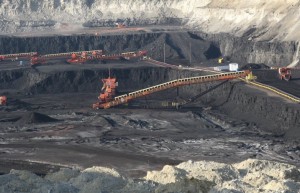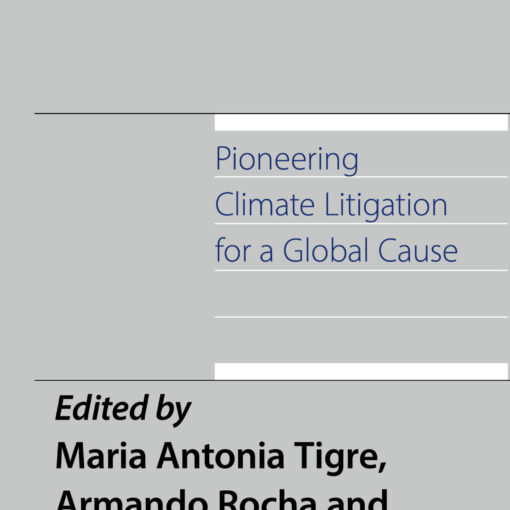 The Sabin Center has recently posted a working paper, Downstream and Upstream Greenhouse Gas Emissions: The Proper Scope of NEPA Review. The paper was co-authored by Executive Director Michael Burger and Associate Director and Fellow Jessica Wentz and will be published in the Fall 2016 edition of the Harvard Environmental Law Review.
The Sabin Center has recently posted a working paper, Downstream and Upstream Greenhouse Gas Emissions: The Proper Scope of NEPA Review. The paper was co-authored by Executive Director Michael Burger and Associate Director and Fellow Jessica Wentz and will be published in the Fall 2016 edition of the Harvard Environmental Law Review.
The paper explores a question that is currently being litigated in various federal circuits and is of critical importance to the future of climate action in the United States: When agencies are conducting environmental reviews for fossil fuel extraction and infrastructure projects, does the National Environmental Policy Act (NEPA) require consideration of greenhouse gas emissions from activities that occur “downstream” from the proposed action, such as the combustion of the fossil fuels, and emissions from activities that occur “upstream” from the proposed action, such as the extraction of the fossil fuels? This question is an essential one, because it can significantly affect the balance of costs and benefits of a proposed project and an agency’s ability to justify the approval of the project in light of that balance. It can also influence broad, programmatic decisions about public lands management, energy infrastructure and transportation networks.
In the paper, we argue that upstream and downstream emissions do typically fall within the scope of indirect and cumulative impacts that must be evaluated under NEPA, and provide recommendations on how agencies can account for such emissions in a manner that will improve federal decision-making, shield agencies from liability, and provide much-needed information about the indirect and cumulative effects of fossil fuel development on global climate change.
To support the argument and recommendations, the Article makes several unique contributions to the growing literature on NEPA and climate change.
First, we describe how federal approvals of fossil fuel extraction and infrastructure contribute to global climate change, and we explain why federal agencies have ample discretion to account for these impacts when deciding whether to issue such approvals.
Second, we conduct an in-depth examination of NEPA’s requirements as they pertain to the analysis of upstream and downstream emissions, focusing in particular on the requirements to evaluate indirect effects, cumulative effects, and effects from related actions. Notably, upstream and downstream emissions fit squarely within the regulatory definition of “indirect impacts” that should be evaluated in NEPA reviews, which are “impacts that are caused by the action and are later in time or farther removed in distance, but still reasonably foreseeable.”
 Third, we describe how federal agencies currently account for upstream and downstream greenhouse gas emissions in their NEPA reviews. We find that there are major inconsistencies in the analytical approaches both within and across agencies, but many agencies are nonetheless beginning to recognize that upstream and downstream emissions fall within the scope of impacts that should be reviewed under NEPA. For example, the Department of Interior has announced that it will review downstream greenhouse gas emissions from combustion in its programmatic environmental review of the federal coal leasing program.
Third, we describe how federal agencies currently account for upstream and downstream greenhouse gas emissions in their NEPA reviews. We find that there are major inconsistencies in the analytical approaches both within and across agencies, but many agencies are nonetheless beginning to recognize that upstream and downstream emissions fall within the scope of impacts that should be reviewed under NEPA. For example, the Department of Interior has announced that it will review downstream greenhouse gas emissions from combustion in its programmatic environmental review of the federal coal leasing program.
Fourth, we synthesize all of the existing case law on this subject. We find that courts have consistently treated upstream and downstream emissions as the type of indirect effects that must be evaluated in NEPA reviews for coal extraction and transportation projects. Courts have not yet issued similar holdings in the context of oil and gas extraction and transportation, but this issue is currently being litigated. Most notably, there are now four cases before the D.C. Circuit Court of Appeals regarding the scope of upstream and downstream greenhouse gas emissions that must be considered in environmental reviews for natural gas pipelines and export terminals (for a list of pending cases, check out our climate litigation chart).
Finally, we conclude with recommendations on how agencies should evaluate upstream and downstream emissions in environmental documents for fossil fuel projects. We recommend that agencies provide a complete inventory of emissions from all stages of the fossil fuel supply chain as a starting point. Agencies can then complement this inventory with additional analysis—such as an evaluation of how the project will affect fossil fuel prices and production from other sources. Our recommendations are accompanied by a list of analytical tools and other resources that can be used to estimate greenhouse gas emissions from the production, transportation, processing and end use of fossil fuels.
We hope that the paper will serve as a roadmap for agencies, courts, and environmental advocates to ensure that the federal government conducts a thorough analysis of indirect greenhouse gas emissions prior to approving any projects that will contribute to the production and consumption of fossil fuels.
The working paper is available here. A complete list of projects related to environmental assessment and climate change is available here.


